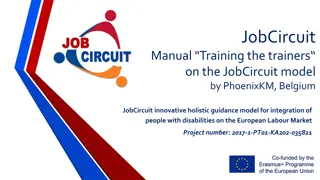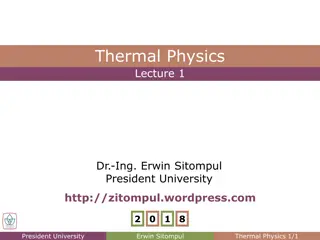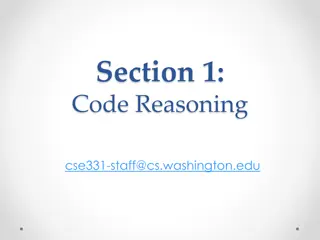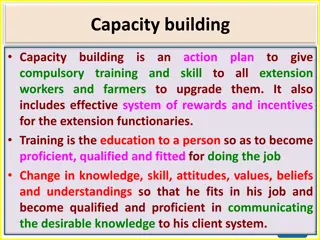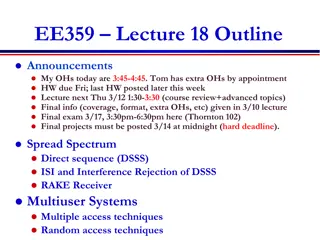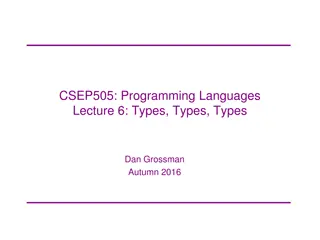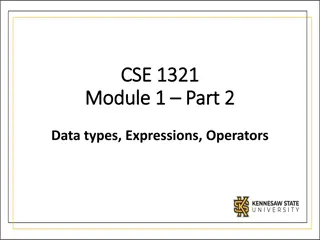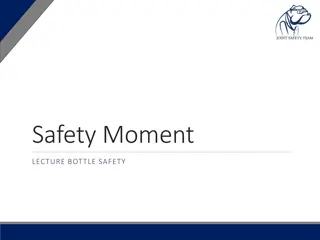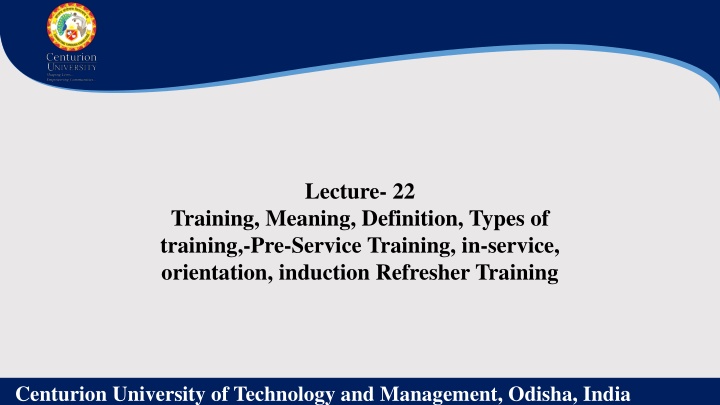
Understanding Training: Defining Types and Importance
Explore the meaning and significance of training, including definitions and the different types such as pre-service, in-service, orientation, and induction training. Discover the essential role training plays in enhancing skills and knowledge for job performance.
Download Presentation

Please find below an Image/Link to download the presentation.
The content on the website is provided AS IS for your information and personal use only. It may not be sold, licensed, or shared on other websites without obtaining consent from the author. If you encounter any issues during the download, it is possible that the publisher has removed the file from their server.
You are allowed to download the files provided on this website for personal or commercial use, subject to the condition that they are used lawfully. All files are the property of their respective owners.
The content on the website is provided AS IS for your information and personal use only. It may not be sold, licensed, or shared on other websites without obtaining consent from the author.
E N D
Presentation Transcript
Lecture- 22 Training, Meaning, Definition, Types of training,-Pre-Service Training, in-service, orientation, induction Refresher Training Centurion University of Technology and Management, Odisha, India
Training Definitions Training is the art of increasing the knowledge and skill of an employee for doing a particular job. Training is a learning process, which seeks a relatively permanent change in behavior that occurs as a result of experience. Need for training- The process of training has caught up mainly in industries. This can be attributed to the sudden and competitive change that is occurring in the world. However, the needs for training can be fixed down to the following: Rapid changes in technologies and jobs people do. Immediate and long term skill shortage Changes in the expectation and composition of work force Competition and market pressure for improvement in quality of products and services. Centurion University of Technology and Management, Odisha, India
Pre-service Training- It is a process through which the individuals are made ready to enter a certain kind professional job, as in agriculture, medicine or engineering. It is a professional training prior to any appointment, oriented to make an individual prepared to enter into a new profession. Swanson (1984) defines it as a programme of training activities that prepares an individual for a career in extension, and usually leads to some type of diploma, certificate, degree, or other qualification in one or more of the following agriculture, fisheries, forestry, animal and/or veterinary science or home science. The state departments of Agriculture now prefer University graduates for entry into their extension services and similarly the Veterinary department prefers to to take only Veterinary graduates released from the Universities. Centurion University of Technology and Management, Odisha, India
In-Service Training It is meant for in service candidates who are on the job. In-service training is a process of staff development for the purpose of improving the performance of an incumbent holding a position with assigned job responsibilities. It promotes the professional growth of individuals. Inservice training is a problem centred, learner oriented and time-bound series of activities, which provide the opportunity to develop a sense of purpose. broaden perception of the participants and increase their capacity to gain knowledge and mastery of techniques. Centurion University of Technology and Management, Odisha, India
In-Service training are of different types, some of them are as follows: i. Orientation Training This training is given usually to newly appointed extension personnel. It provides an introduction to public employment and provides answers to questions which a newly recruited person is likely to ask. This term is also used for training in-service extension personnel in a new. Induction- Induction training is given to new extension personnel immediately after they have been employed and before they are assigned to work in particular area usually as an Assistant. Agriculture Officer or Agriculture Officer, or Extension Office Centurion University of Technology and Management, Odisha, India
Maintenance- This training is originally started for trainers of the training institutes and Universities for refreshing their knowledge and skills for imparting them to trainees. The term indicates any new training for updating professional competence of extension personnel notably in the subject matter area of specialization. This training is usually imparted in the later career of extension personnel. Retraining- It refers to the efforts designed to prepare an individual for a new assignment or a broadened aspect of the old specialty. Career or development training / Training for professional qualification- This type of training is designed to upgrade the knowledge, skills and ability of employees to help them assume greater responsibility in higher positions. Centurion University of Technology and Management, Odisha, India
Training Process- In case of training, the focus will be on a person-on-the job-in the organization. Whereas in the case of training process, the focus will be both at the starting point and at the end with difference. The application of what a person has learned during training process is called the effectiveness of training. The training process has three phases as follows: Pre-training Training Post-training Centurion University of Technology and Management, Odisha, India
Pre-training phase Pre-training process starts with understanding the situation, which calls for behavior that is more effective. Key aspect of the process is analysis of situation and job on which improved performance is to be achieved. Pre-training begins with description of the job to be changed by it. The technical requirement of the job is not enough but also knowledge on operational description of the job is required so that the training programme can be designed to meet out those requirements. Training process models There are several models for training processes, of which there are three important models. Simple model of training process Elaborated model of training process Centurion University of Technology and Management, Odisha, India
Simple Model of the Training Process- More effective behaviour of people-on-the-job-in-the-organization is the primary objective of the training process as well a whole. In the simple training process, improvement is dependent variable and participants and organizations independent variables. A model of training in its simplest form. Spiral Model- The spiral model in the figure 3 shows the phases through which participants pass as they learn, then return (with enhanced capabilities, we hope) to their jobs. At various stages in the process the other two partners contribute inputs to assist the participants. These inputs are shown as arrows: arrows originating inside the spiral depict inputs of the work organization; arrows originating outside the spiral , inputs of the training institutions. The arrows are merely visual conveniences. The large spiral itself comprises spiral feedback system. We will use this spiral model to explicate the training process, further focussing turn on participants, work organizations. Centurion University of Technology and Management, Odisha, India
Post-training phase Here the situation changes, the participant goes back to his work place, meets his colleagues, family members etc. He goes prepared with some anticipation; as he had been away from them for a while and also had come back learning some new ideas. Newly learned skills undergo modifications to fit in with the work situation. If the organization were encouraging and helping, the participant would use his training for the betterment of his organization. Some organization would offer support to the participants to have contact with the training institution even after the training program. On the other hand, if the organization resented his absence and if his table is loaded with work, he would feel extra burden and would work to make up for lost time. He would loose his interest to make use of his training and the contact with the training institution is also broken off. Centurion University of Technology and Management, Odisha, India


